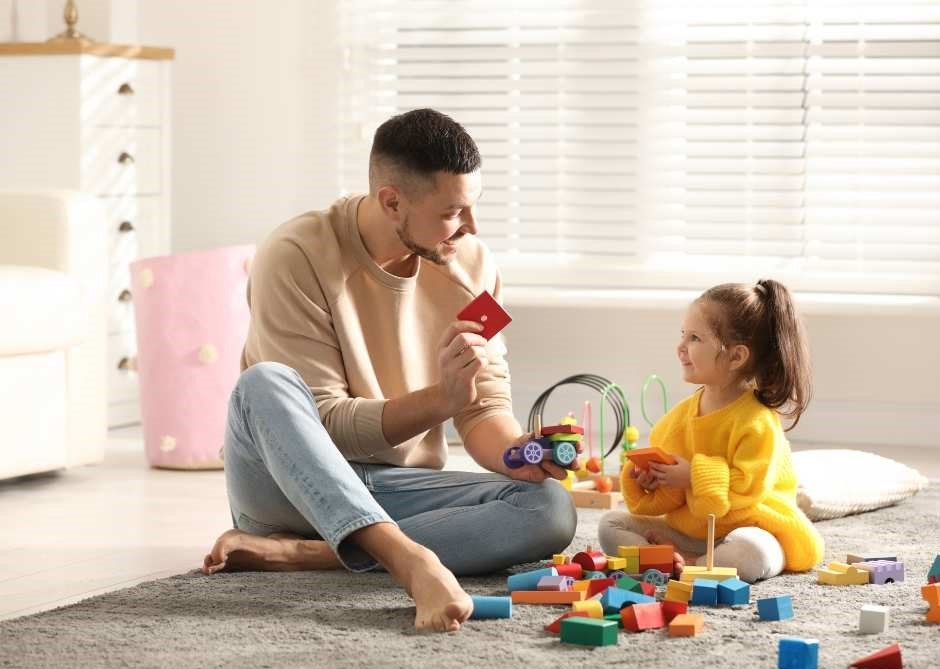Understanding Articulation vs. Phonological Disorders
If you've ever been concerned about your child's speech development, you may have encountered the terms articulation disorder or phonological disorder. These are both types of speech sound disorders that can affect a child's ability to communicate effectively. Understanding the differences between these disorders is crucial for addressing and treating speech sound issues.
In this article, we will delve into the distinctions between articulation and phonological disorders, their causes, how to identify speech sound errors, and the various treatment approaches available.
Distinguishing Articulation and Phonological Disorders
Identifying Speech Sound Errors
Treatment Approaches for Articulation and Phonological Disorders
Supporting Your Child's Speech Development
Frequently Asked Questions About Articulation and Phonological Disorders
How Connected Speech Pathology Can Help with Articulation and Phonological Disorder Treatment
Distinguishing Articulation and Phonological Disorders
Functional speech sound disorders are a broad category of speech sound disorders that include articulation and phonological disorders. The term "functional" means that the disorder is not caused by any known physical or neurological abnormality.
A speech sound error is a mistake that a person makes when they produce a speech sound. This can include substituting one sound for another, distorting a sound, or omitting or adding a sound.
Speech sound errors are common in young children as they are still learning to produce speech sounds correctly. However, if a child continues to make speech sound errors past a certain age, it may be a sign of a speech sound disorder.
Speech sound errors can be classified into two main types: articulation and phonological.
Articulation errors involve difficulty producing individual speech sounds correctly. This may be due to problems with the tongue, lips, teeth, or jaw. Children with articulation errors may substitute, omit, or distort certain sounds.
Phonological errors involve difficulty using the rules of language to produce speech sounds. For example, a child with a phonological error may drop the final consonant of every word (e.g., "cat" becomes "ca").
Phonological Processing Disorder
Check out our blog on phonological processing disorder for more information!
Speech sound errors can also be classified according to the type of sound involved. For example, errors can be made in consonants, vowels, or blends.
Here are some examples of speech sound errors:
Articulation errors:
Substituting /k/ for /t/ (e.g., saying "kit" instead of "sit")
Distorting /r/ (e.g., saying "wabit" instead of "rabbit")
Omitting /s/ at the end of words (e.g., saying "ca" instead of "cat")
Phonological errors:
Dropping the final consonant of every word (e.g., "dog" becomes "do")
Adding a /d/ to the beginning of every word (e.g., "apple" becomes "dapple")
Fronting velar consonants (e.g., saying "k" instead of "g")
Understanding the difference between articulation and phonological disorders is important for providing the right treatment.
To further understand these disorders, let's delve into their respective causes.
Causes of Articulation and Phonological Disorders
The exact cause of articulation and phonological disorders is not always known. However, there are a number of factors that may play a role, including:
Genetics: Some children are born predisposed to articulation and phonological disorders. This may be due to certain genes that affect speech sound development.
Hearing loss: Children with hearing loss may have difficulty hearing and producing speech sounds correctly. This is because they may be unable to hear the subtle differences between speech sounds.
Oral-motor difficulties: Children with oral-motor difficulties may have difficulty coordinating the muscles of their tongue, lips, teeth, and jaw. This can make it difficult for them to produce speech sounds correctly.
Neurological disorders: Some neurological disorders, such as cerebral palsy and Down syndrome, can affect speech sound production. This is because these disorders can damage the nerves that control the muscles involved in speech.
Sometimes, there may be no identifiable cause for an articulation or phonological disorder.
Identifying Speech Sound Errors
Speech sound errors are mistakes that people make when they produce speech sounds. These errors can be difficult to identify, especially for parents and other caregivers unfamiliar with speech development. However, there are a few things that you can look for to identify speech sound errors.
One way to identify speech sound errors is to listen for patterns in your child's speech. For example, if your child consistently omits the /s/ sound, that is a sign that they may have a speech sound error. Other common patterns of speech errors include:
Substitutions- Substituting one sound for another (e.g., saying "wabbit" instead of "rabbit")
Omissions- Deleting sounds (e.g., saying "nana" instead of "banana")
Distortions- Distorting sounds (e.g., saying "shhh" instead of "s")
Additions- Adding sounds (e.g., saying "buhlack" instead of "black")
Another way to identify speech sound errors is to compare your child's speech to those of other children of the same age. If your child is having difficulty producing specific sounds that other children can produce correctly, that is a sign that they may have a speech sound error.
If you are concerned that your child may have a speech sound error, it is important to talk to a speech-language pathologist. They can assess your child's speech and development and recommend appropriate steps.
Here are some specific things to listen for when identifying speech sound errors:
Articulation errors: These errors involve difficulty producing individual speech sounds correctly. For example, a child with an articulation error may say "wabbit" instead of "rabbit" or "thith" instead of "this."
Phonological errors: Phonological errors involve phonological patterns of sound errors that simplify speech sound production, affecting multiple sounds. These errors result from phonological processes, making it challenging for children with phonological disorders to handle more than one sound. For example, a child with a phonological error may drop the final consonant of every word (e.g., "cat" becomes "ca") or add an extra sound to the beginning of every word (e.g., "apple" becomes "bapple").
Comprehending phonological errors assists professionals in developing a personalized therapy approach, targeting the specific sound patterns and rules a child needs to improve. This can lead to better speech clarity and overall communication skills.
Prosodic errors: These errors involve difficulty with the rhythm, intonation, and stress of speech. For example, a child with a prosodic error may speak in a monotone voice or have difficulty emphasizing the correct words in a sentence.
If you notice any of these errors in your child's speech, it is important to talk to a speech-language pathologist. They can help you determine if your child has a speech sound disorder and recommend appropriate treatment.
Evaluating a Child's Speech
Evaluating a child's speech is an important part of identifying and diagnosing speech sound disorders. Speech-language pathologists (SLPs) use a variety of methods to evaluate a child's speech, including:
Case history: SLPs will ask questions about the child's medical history, developmental history, and family history. This information can help the SLP identify potential risk factors for a speech sound disorder.
Articulation assessment: SLPs will assess the child's ability to produce individual speech sounds in isolation, in syllables, and in words.
Phonological assessment: SLPs will assess the child's ability to use the rules of language to produce speech sounds.
Oral-motor assessment: SLPs may assess the child's oral-motor skills, such as the strength and coordination of the muscles in the tongue, lips, and jaw.
Receptive language assessment: SLPs may assess the child's receptive language skills, such as their ability to understand words and sentences.
Expressive language assessment: SLPs may assess the child's expressive language skills, such as their ability to use words and sentences to communicate.
SLPs will also observe the child's speech in a natural setting, such as during play or conversation. This allows the SLP to see how the child's speech is used in real-world situations.
Once the SLP has completed the evaluation, they can determine if the child has a speech sound disorder and recommend appropriate treatment.
Here are some tips for parents and other caregivers on how to evaluate a child's speech:
Pay attention to the child's speech patterns. Are there any sounds that the child consistently omits, substitutes, or distorts?
Compare the child's speech to those of other children of the same age. Are there any significant differences?
Ask the child to repeat words and sentences. Does the child have difficulty producing certain sounds?
Observe the child's speech naturally, such as during play or conversation. Does the child have difficulty communicating with others?
Treatment Approaches for Articulation and Phonological Disorders
Treatment approaches for articulation and phonological disorders vary based on the specific disorder and individual needs of the child. The main goal of these therapies is to improve a child's speech clarity and overall communication skills.
Articulation and phonological therapies can be customized to address a child's unique challenges. Understanding the differences between these therapies and the child's needs allows parents and professionals to implement the most effective treatment approach.
Articulation Therapy
Articulation therapy is designed to help individuals produce correct speech sounds through cues and exercises.
Articulation therapy, which emphasizes motor movement and sound production, can assist children in overcoming articulation errors and enhancing their speech clarity.
Some common articulation therapy methods include:
Articulation modeling: The SLP will demonstrate how to produce the sound correctly for the child to imitate.
Visual cues: The SLP may use visual cues, such as lip pictures or tongue placement diagrams, to help the child produce the sound correctly.
Tactile cues: The SLP may use tactile cues, such as placing their hand on the child's jaw or tongue, to help the child produce the sound correctly.
Auditory feedback: The SLP may use auditory feedback, such as recordings of the child's speech, to help the child hear and correct their own errors.
Articulation practice: The child will practice producing the sound in isolation, in syllables, in words, and in sentences.
The SLP may also use a variety of games and activities to make articulation therapy more fun and engaging for the child.
Here are some examples of articulation therapy activities:
Mirror practice: The child watches themselves in a mirror as they produce the sound. This helps the child to see how their mouth and tongue are moving when they produce the sound.
Articulation drills: The child practices producing the sound in various ways, such as repeating it quickly, slowly, loudly, and softly.
Articulation games: The child playsgames that involve producing sound, such as blowing bubbles or playing with a straw.
The SLP will choose the articulation therapy methods and activities that are most appropriate for the child's individual needs.
Articulation therapy can be effective in helping children with articulation disorders learn to produce speech sounds correctly. With the help of a qualified SLP, most children can overcome their articulation difficulties.
Phonological Therapy
Phonological therapy focuses on teaching the rules governing speech sounds and addressing patterns of sound errors. This therapy helps children improve their ability to recognize and use speech sounds accurately, leading to clearer speech and better overall communication skills.
Minimal pairs therapy: This method involves using pairs of words that differ by only one sound (e.g., "cat" and "mat"). The child is taught to produce the two words correctly and to discriminate between them.
Maximal oppositions therapy: This method involves using pairs of words that differ by several sounds (e.g., "cat" and "stop"). The child is taught to produce the two words correctly and to discriminate between them.
Sound-play: This method involves using games and activities that help the child to learn and practice the rules of phonology. For example, the child may be asked to sort pictures of objects based on the sound at the beginning of the word.
Phonological awareness training: This method helps the child to develop an awareness of the sound structure of words. For example, the child may be asked to identify the number of syllables in a word or to break a word down into its individual sounds.
The SLP will choose the phonological therapy method that is most appropriate for the child's individual needs.
In addition to these specific methods, phonological therapy may also involve the following:
Modeling correct speech: The SLP will model correct speech for the child and provide feedback on the child's production.
Using visual cues: The SLP may use visual cues, such as lip pictures or hand gestures, to help the child produce speech sounds correctly.
Using auditory feedback: The SLP may use auditory feedback, such as recordings of the child's speech, to help the child hear and correct their own errors.
Phonological therapy can be effective in helping children with phonological disorders to learn the rules of phonology and to produce speech sounds correctly.
Supporting Your Child's Speech Development
Supporting your child's speech development involves practicing exercises at home and encouraging communication in daily activities.
Encouraging communication through play, conversation, and storytelling can help build a child's confidence and improve their speech skills.
Engaging with your child in speech and language activities can significantly improve their progress and overall communication skills. This support can be invaluable in helping your child overcome speech sound disorders and reach their full potential.
Home Exercises
Home exercises are a crucial component of a child's speech therapy journey. These exercises, designed by a speech-language pathologist, can include activities such as:
Blowing bubbles and balloons
Incorporating oral motor exercises into daily routines
Playing speech therapy games
Practicing tongue movements
Consistent practice of these exercises at home can reinforce the skills learned during therapy sessions and promote steady progress in the child's speech sound production. This additional support can improve a child's speech clarity and communication abilities.
Encouraging Communication
Promoting communication is vital for a child's speech development. Parents can encourage communication through play, conversation, and storytelling by engaging in activities such as playing pretend, board games, puzzles, and reading stories together. Asking open-ended questions and having meaningful conversations can also help encourage communication and improve speech skills.
Parents can help build their children's confidence and improve their speech skills by actively participating in these activities and providing a supportive environment. This encouragement can play a significant role in overcoming speech sound disorders and enhancing overall communication abilities.
When to Seek Professional Help
Seeking professional help from a speech-language pathologist is recommended if you are concerned about your child's speech development or ability to be understood by others. If your child is not hitting their speech milestones, their speech is difficult to understand, or they are having trouble with language development, it is a good idea to consult a professional for guidance and support.
Prompt intervention is vital for optimal outcomes in treating speech sound disorders. It is recommended to start therapy for articulation and phonological disorders before the age of 5, but if your child is still struggling after the age of 4 or 5, seeking professional help is highly advised.
Frequently Asked Questions About Articulation and Phonological Disorders
1. What is the difference between articulation and phonological disorders?
Articulation disorders involve difficulty in forming individual speech sounds properly, whereas phonological disorders involve the incorrect use of sounds in a pattern, such as using them in the wrong place.
2. What is an example of a phonological disorder?
An example of a phonological disorder is simplifying words by repeating two syllables, like saying "baba" instead of "bottle," leaving out consonant sounds, or changing certain consonant sounds, such as "tat" instead of "cat."
3. What is an articulation disorder?
An articulation disorder is an inability to correctly produce certain speech sounds (phonemes) due to imprecise placement, timing, pressure, speed, or flow of the lips, tongue, or throat. Articulation is the process humans use to produce syllables and words, and a child with this disorder may be unable to produce certain sounds or make them incorrectly.
4. What types of therapy are available for speech sound disorders?
Articulation and phonological therapies are two types of speech therapy that can help individuals with speech sound disorders. Articulation therapy works on motor movement and sound production, while phonological therapy focuses on patterns and rules.
5. Should I have my child undergo a hearing screening before we start therapy?
Yes, a hearing screening is a short test to check how well an individual can hear different sounds through their sound system. This screening is crucial for identifying hearing issues that could be causing speech sound disorders.
If a child is found to have hearing difficulties, further assessment and intervention may be necessary to address the underlying cause. Addressing hearing issues can significantly improve a child's speech sound production and communication skills.
How Connected Speech Pathology Can Help with Articulation and Phonological Disorder Treatment
Connected Speech Pathology is a teletherapy company that provides online speech therapy services to children and adults. Our SLPs are highly experienced and qualified to treat articulation and phonological disorders.
Connected Speech Pathology offers many advantages for families seeking articulation and phonological disorder treatment. Our therapy is convenient and affordable. Families can access Connected Speech Pathology therapy from the comfort of their own homes.
Second, Connected Speech Pathology SLPs are highly skilled and experienced in treating articulation and phonological disorders. Connected Speech Pathology SLPs use a variety of evidence-based treatment approaches, and they work closely with families to develop individualized treatment plans for each child.
Third, Connected Speech Pathology therapy is effective. Research has shown that teletherapy is as effective as in-person speech therapy for treating articulation and phonological disorders.
Here are some specific ways that Connected Speech Pathology can help with articulation and phonological disorder treatment:
Provide individualized treatment plans: Connected Speech Pathology SLPs will work with families to develop individualized treatment plans for each child. These treatment plans will be tailored to the child's specific needs and goals.
Use evidence-based treatment approaches: Connected Speech Pathology SLPs use a variety of evidence-based treatment approaches, such as articulation modeling, visual cues, tactile cues, auditory feedback, and articulation practice.
Provide regular feedback: Connected Speech Pathology SLPs will provide regular feedback to children and families on their progress. This feedback will help to ensure that children are making progress and that families are supporting their child's speech development at home.
Collaborate with families: Connected Speech Pathology SLPs believe that family involvement is essential to the success of speech therapy. They will work closely with families to give them tips on supporting their child's speech development at home.
If you are concerned about your child's speech development, Connected Speech Pathology can help. Contact Connected Speech Pathology today to schedule a free consultation.
Summary
In conclusion, understanding the differences between articulation and phonological disorders is essential for addressing and treating speech sound issues effectively. By identifying speech sound errors, evaluating a child's speech, and implementing the appropriate treatment approach, parents and professionals can help children overcome speech sound disorders and reach their full potential.
Remember, early intervention and consistent support are crucial to fostering successful speech development, so don't hesitate to seek professional help if you have concerns about your child's speech abilities.
About the Author
Allison Geller is a communication coach, speech-language pathologist, and founder of Connected Speech Pathology, an international online practice providing professional communication coaching and speech therapy for children, teens, and adults. With more than two decades of experience, she has worked in medical and educational settings, published research on aphasia, and leads a team of specialists helping clients improve skills in public speaking, vocal presence, accent clarity, articulation, language, fluency, and interpersonal communication.










